Good luck to all and hope to see you out on the course. Watch out for those trees!

In honour of the Squeezer, a video for all to enjoy.
Birding, hiking & nature, with a dash of cycling, in southern Ontario.

In honour of the Squeezer, a video for all to enjoy.
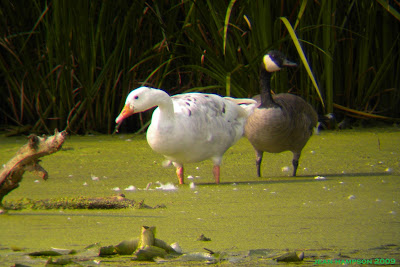
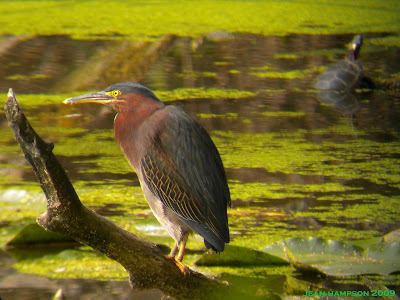

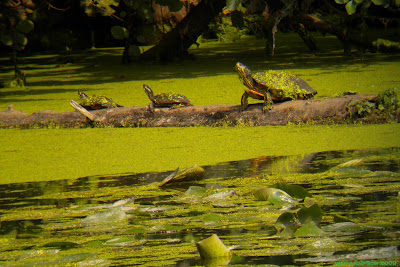

Autumn Wild Onion, Allium stellatum
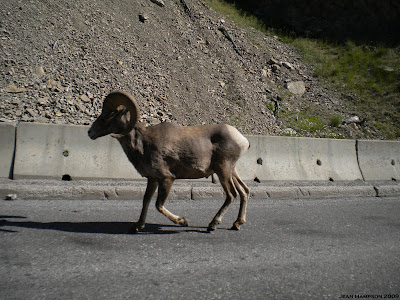
Near the parking area for the Radium Hot Springs pools we observed a flock of bighorn sheep (mostly males).
During the 10-15 minutes of taking in the dramatic view, we observed an American Robin and a Dark-eyed Junco. The junco was not the "slate-coloured" variety we normally observe in our back yard. This one, a first for Jean and I, was a male "Oregon Junco".
Hector Gorge, Elevation 1266 m
In the valley we had some great views of a flock of mountain goats.
We stopped by the Simpson River to observe the results of the 2001 Mount Shanks Fire.
In 2003, 12.6% of the park was burned when two large, lightning-caused fires merged. Fire good! New growth rapidly occurs in the nutrient rich earth (created by the fire).
Continuing through the valley along Highway 93, two vehicles ahead of us came to a stop. A gray wolf was crossing the highway. We managed to catch a quick glimpse of the wolf as it was completing its crossing. It then climbed a bank and disappeared into the forest. This was my first viewing of a wolf in the wild.
We stopped for a break and a short hike on a trail that led to the Paint Pots. Though in a valley we were at a higher elevation (1450 m) than we were at the Kootenay Valley Viewpoint. We were approaching the Vermilion Pass. The Continental Divide and Alberta were only 10 kilometres away. This would be our last attempt to add birds to the British Columbia list.
We crossed the Vermilion River while hiking the Paint Pots Trail.
We hiked through the ochre beds. Native tribes from the mountains and prairies used the "red earth" powder mixed with fish oil or animal grease for use in painting bodies, teepees, clothing and pictures on rocks.
Image by Bob
Unfortunately no additions to the B.C. list. Common Raven, Chipping Sparrow and Yellow-rumped Warbler were the only birds seen.
We crossed the Continental Divide into Alberta. Next stop Lake Louise.
We arrived in the mid-afternoon and parked the car in a very busy lot. Jean and her mum started off without me as I grabbed a few things from the car. They were not too far ahead when Jean called out to alert me of a new bird. One I thought would not be so easy. Sitting at the top of a tall conifer was a lifer Clark's Nutcracker (#282)! A woman walking by wondered what was so interesting to us. A bird of course. I did tell her the type but she did not share the same level of excitement that we three did. As we reached the viewing area I was amazed at the number of Clark's Nutcracker we saw. Four more adults and one juvenile were in the trees in the lake's viewing area. The birds had no fear of the tourists. In fact, they took handouts from any tourist willing to feed them. I had no idea that we would be able to tick a lifer Clark's Nutcracker so easily. Birders visiting Banff N.P. for the first time. Don't worry. Clark's Nutcracker will not take a considerably amount of energy to find. In fact, all that is required is a short walk to this amazing view.

Another bird looking for handouts, a fellow member of the Jay family, was a Gray Jay. One adult taking care of this juvenile was seen amongst the Clark's Nutcrackers.

We spotted a pair of Common Loons on Lake Louise.
Image by Jill (mum)
After a late lunch in the Lakeview Lounge of the Fairmont Chateau Lake Louise we birded from the paths surrounding the lake for a while longer. Chipping Sparrow, Pine Siskin and American Robin were added to the Alberta list. It was time to find some accommodation for the night. Why not the Fairmont you ask? Yeah, right.
Staying in Canmore (further down the Trans Canada) was a more economical choice but a quick check of rates (off season and within our budget) at Paradise Lodge and Bungalows had us staying one more night in the national park. Jean and I would have another chance to bird the Lake Louise area before leaving for Calgary. Stay tuned for B.C Trip Part XIII.
Images by Jean unless stated otherwise.
Jean captured this digiscoped image of a juvenile Red-tailed Hawk.
In addition to these 2 Killdeer, we found 2 Spotted Sandpiper and 2 Solitary Sandpiper (# 175 for the year list) in the usual shorebird corner of the north lagoon.

Swallows were flying above the lagoons and we managed to pick out 1 Northern Rough-winged Swallow (#176) in the bunch.
Continuing with the subject of swallows.
Later in the evening, we received an e-mail (addressed to Ontbirders using the listserve) from Mike Cadman of the Canadian Wildlife Service (CWS). In his e-mail, Mike stated, "swallow species are showing a marked decline across Ontario and northeastern North America". The CWS is in the process of determining what research is required to determine why the declines are happening and are interested in collecting preliminary information on pre-migration and migrating flocks in Ontario. Mike asked all on the listserve to provide information on sightings of flocks with 100+ swallows. Jean and I have not seen any large migrating flocks but I did pass on our May 29 sighting of the nesting Bank Swallows (Mike Cadman is also looking for historical data on swallow roosts).
Back to birding at the Wetland Ridge.
Wood Duck boxes have been placed in the south lagoon to encourage mating pairs to nest in the area. It worked. I counted 12 Wood Duck (adults and young) while surveying the lagoon. They were also raising young here last year.
Moving on, we observed some activity in the adjacent woods of the escarpment.
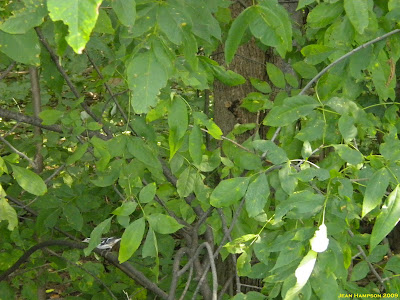
A spying Black and White.

A close up.
A Yellow Warbler was the last bird observed for the afternoon as we walked between the vineyards and lagoons. The day of birding was done and our two weeks of vacation would soon be coming to an end. The lifer Yellow-bellied Flycatcher helped ease the realization that we would be returning to work soon.